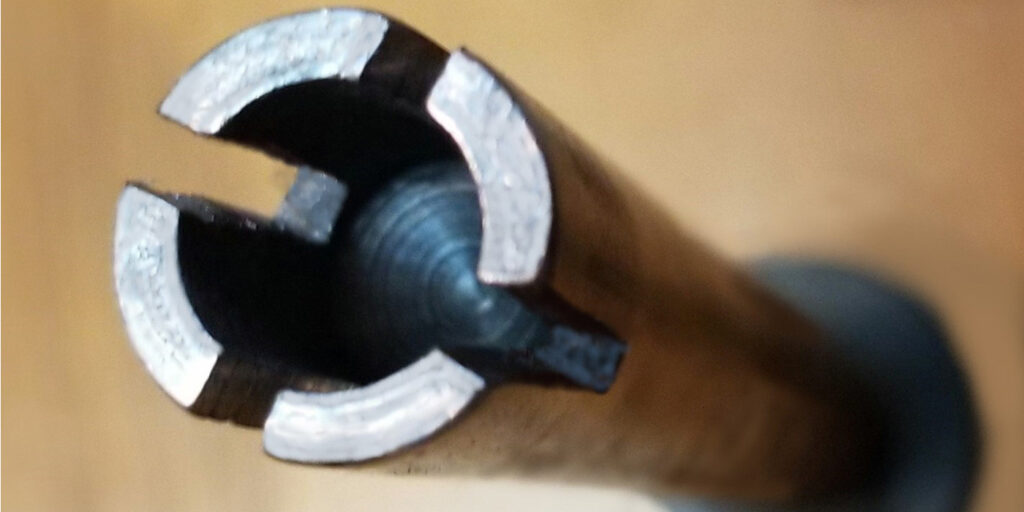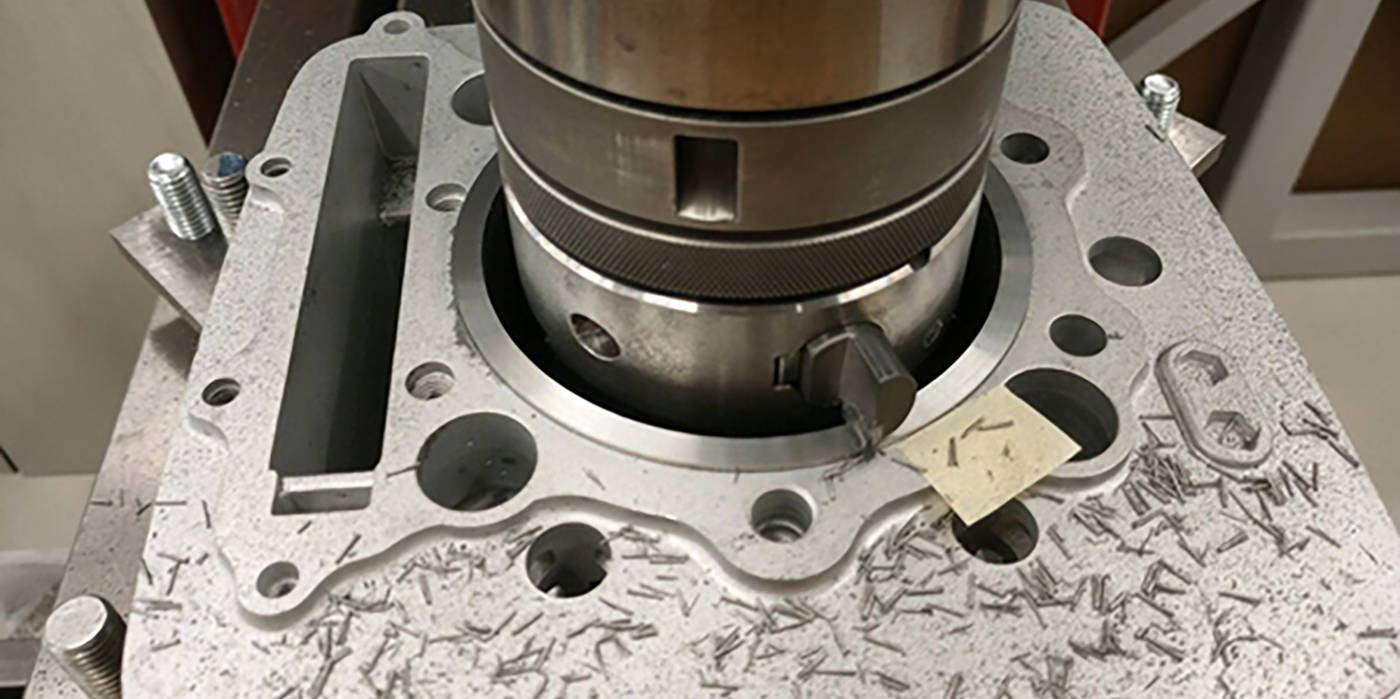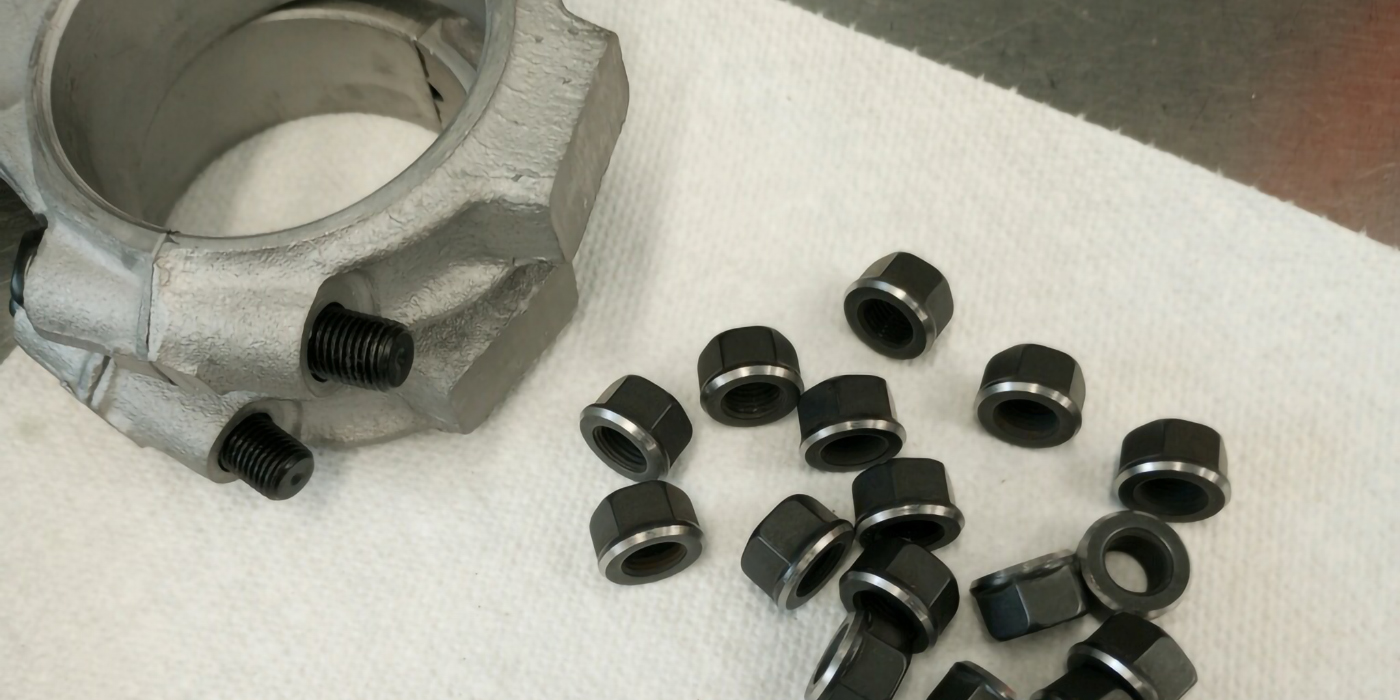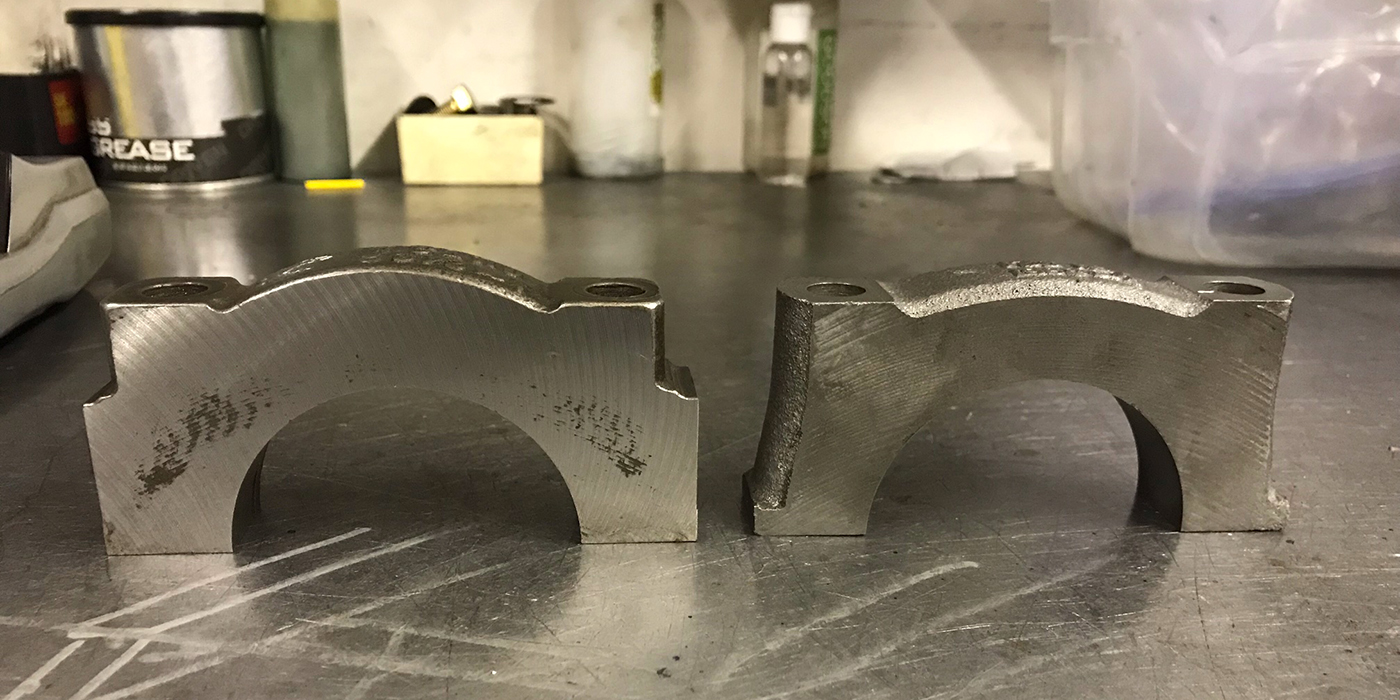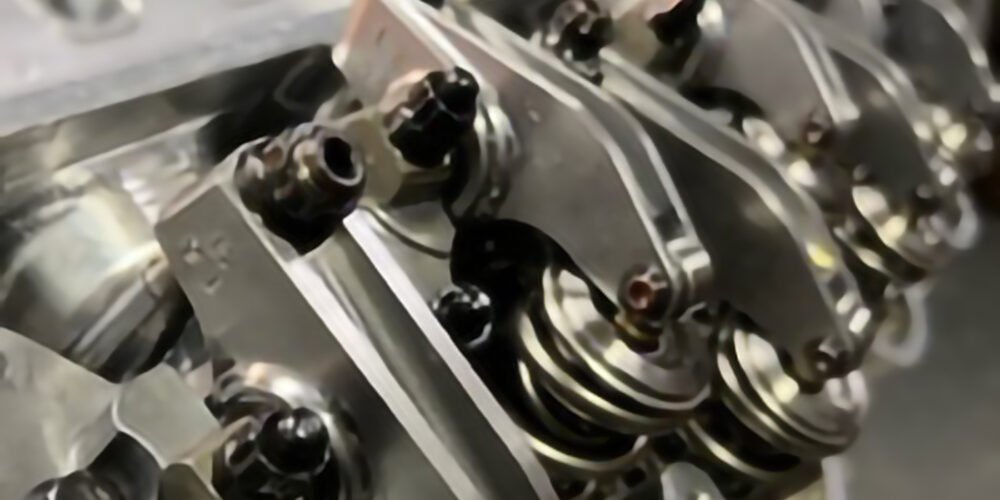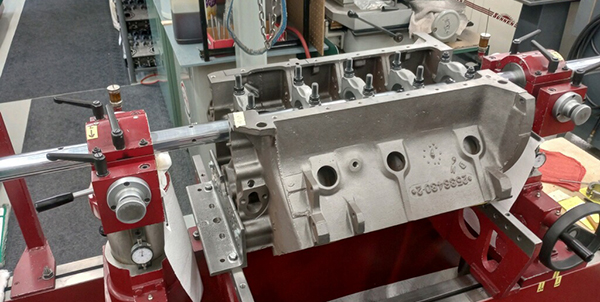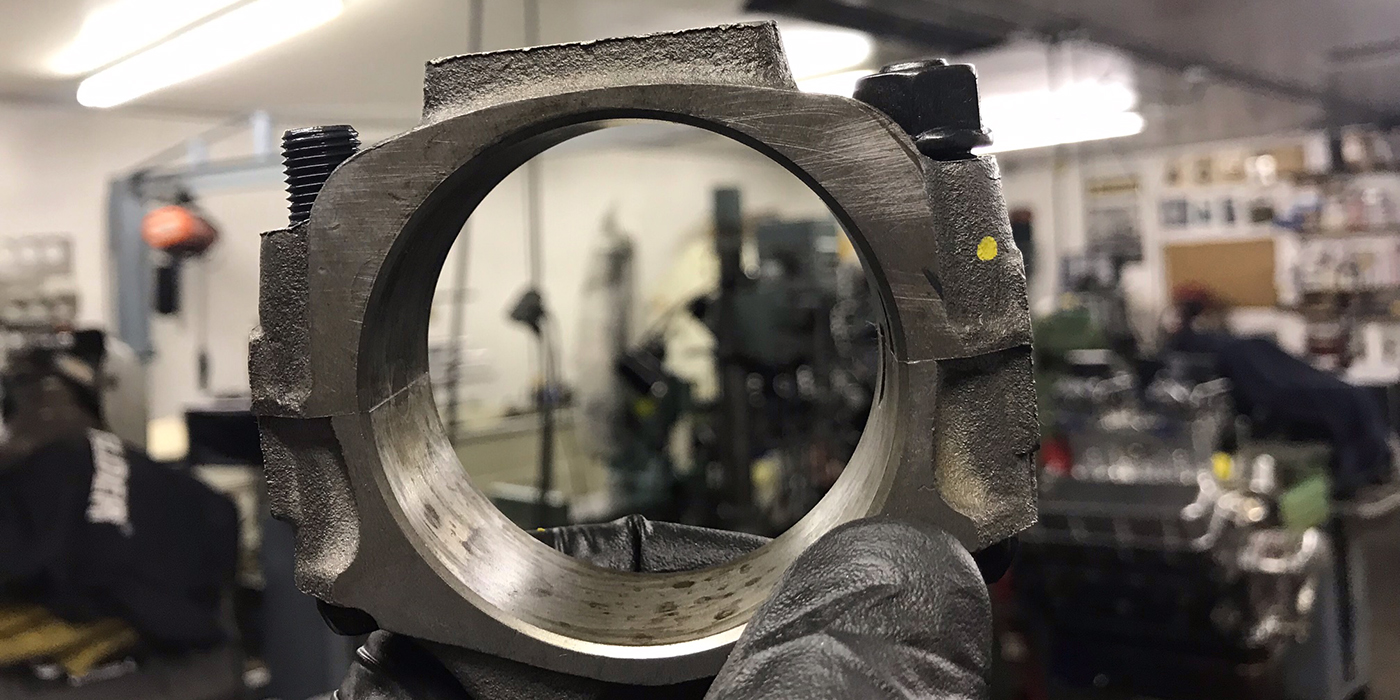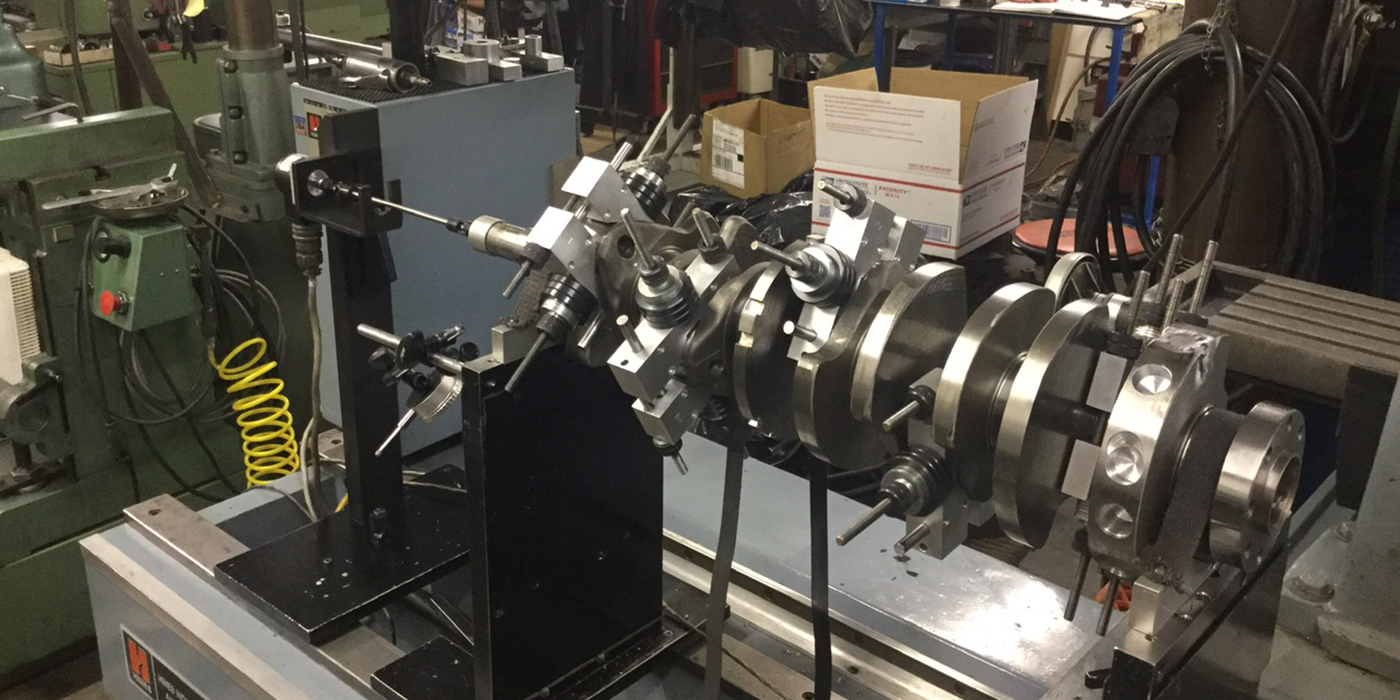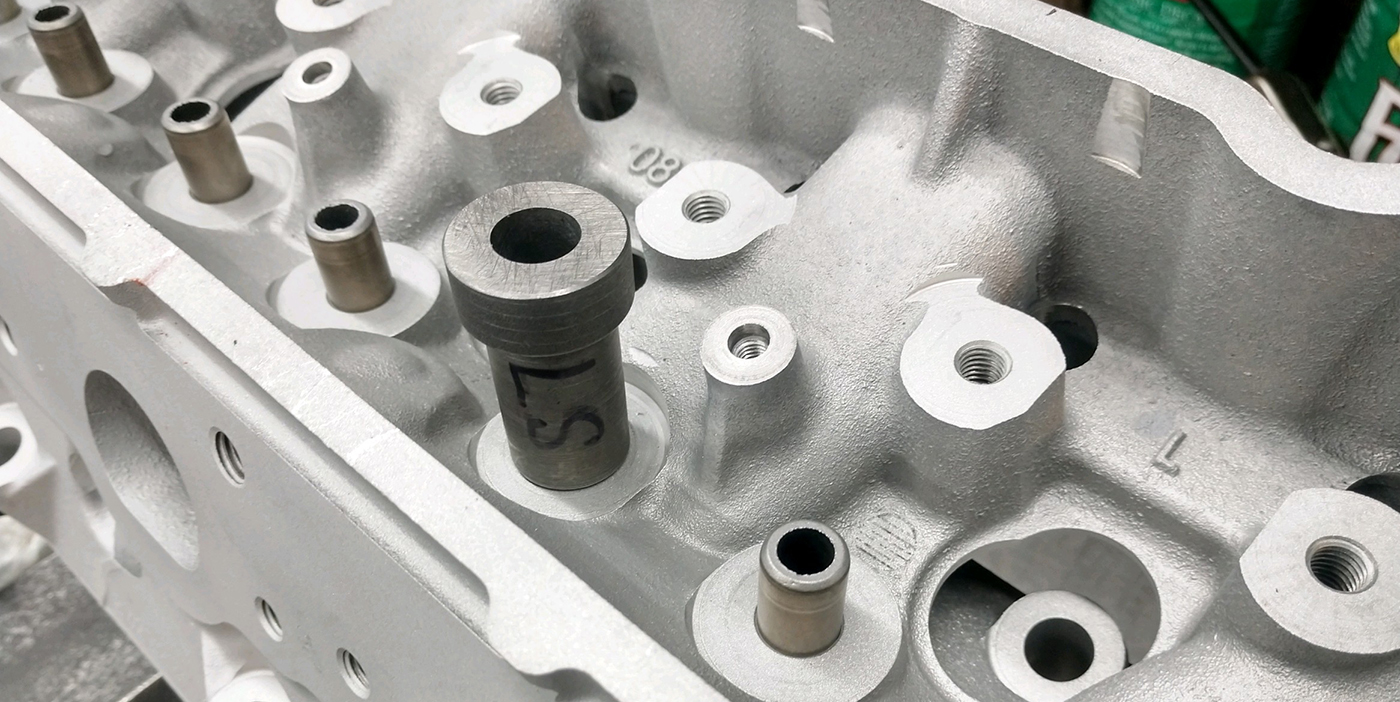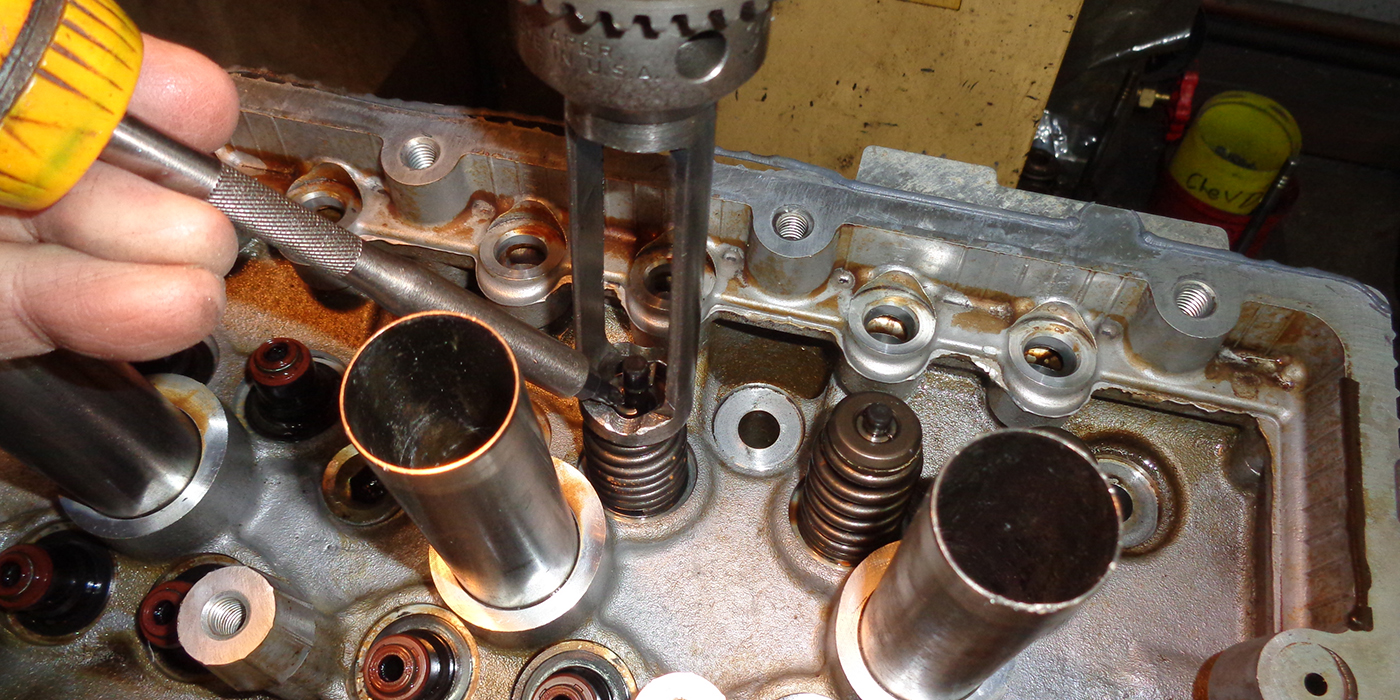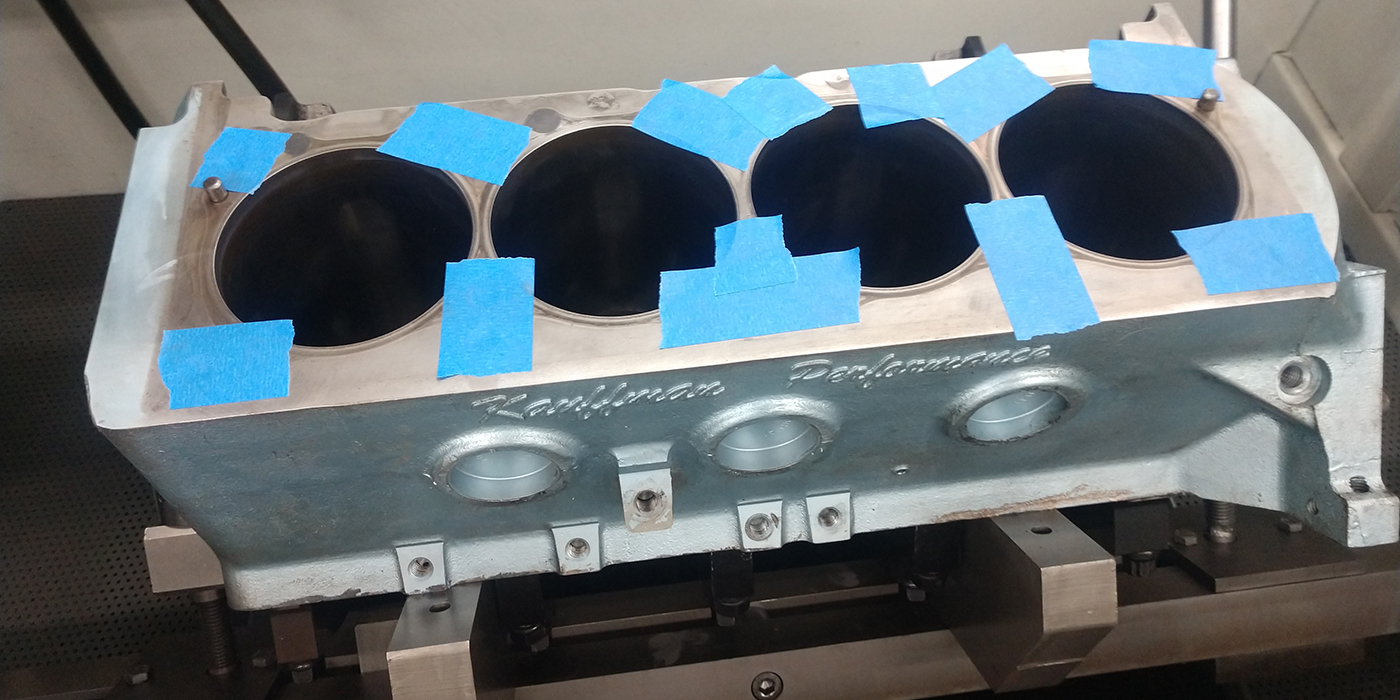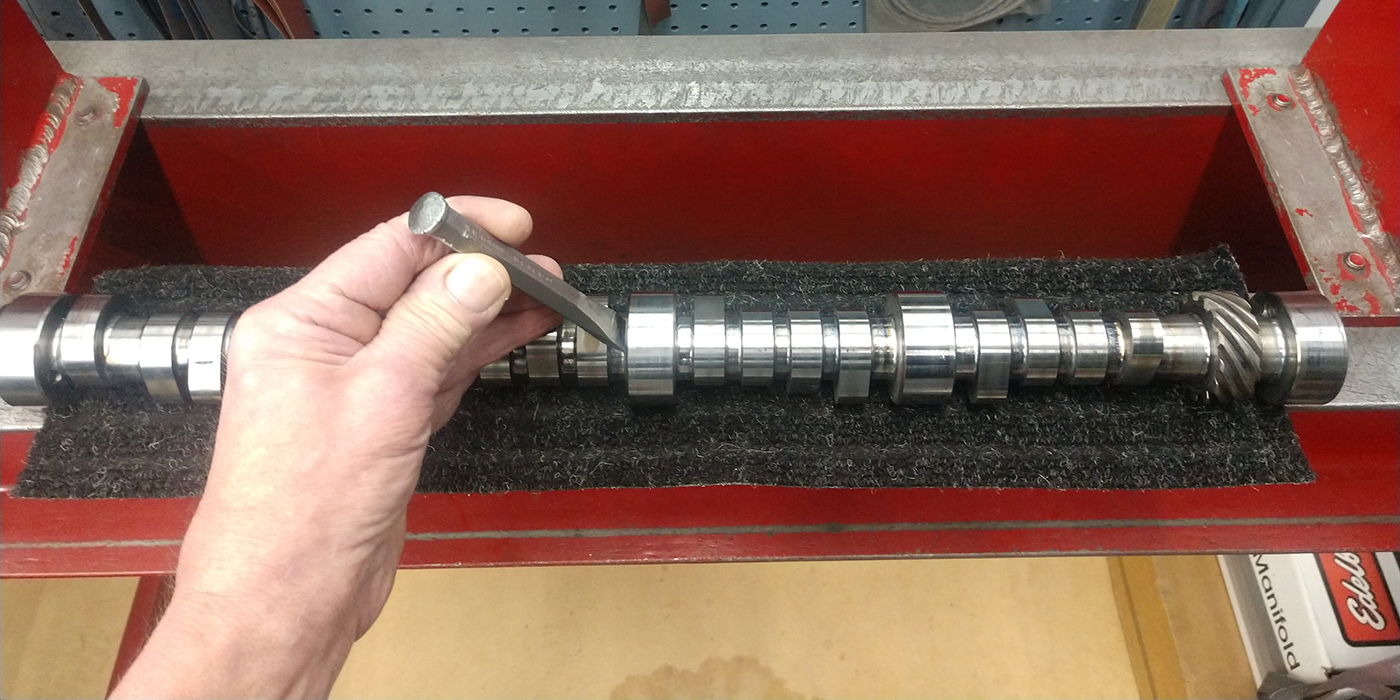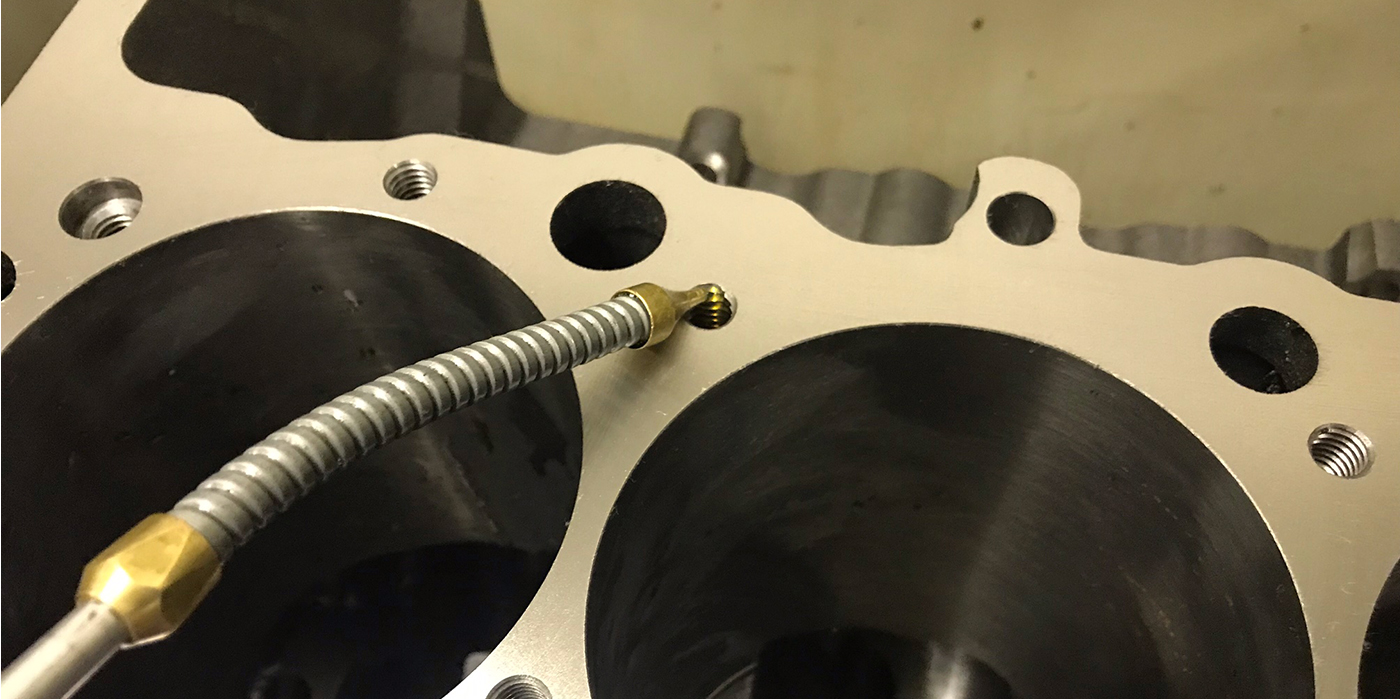LONG TAP EXTENTION
Chasing threads at the bottom of deep holes in engine blocks can be done with a pulley tap. Pulley taps are made with an extra-long shank. However, if you do not have a pulley tap, you can make a tap extension. Here’s how: Cut off the threaded end of a long bolt and drill a hole in the end of the bolt’s shank 1/2” deep. To determine the hole size, measure the distance across the flats (AF) of the tap’s square drive.
Multiply AF distance by 1.155 to find drill diameter (DD). Example: AF = 0.252” Drill size = 0.252” x 1.155 = 0.2916”. In this case, use a letter “L” size drill bit (0.290”). Set the tap’s square drive on the hole in the bolt; mark the bolt where each corner of the tap’s square is located. Using an angle grinder with a 1/16” wide cutting wheel, slot the bolt where marked, about 1/2” length. Slots should be just wide enough to let the tap’s square drive wedge into the bolt’s hole.
Slot width is typically 0.196 x DD. Max slot width = 0.392 x DD. Example: typical 0.196 x 0.290 = ~0.057” and Max 0.392 x 0.290” = 0.114”. If you wish to permanently secure the tap, silver solder it in bolt. Otherwise use the tap with the wedge fit, or with cured red threadlocker.
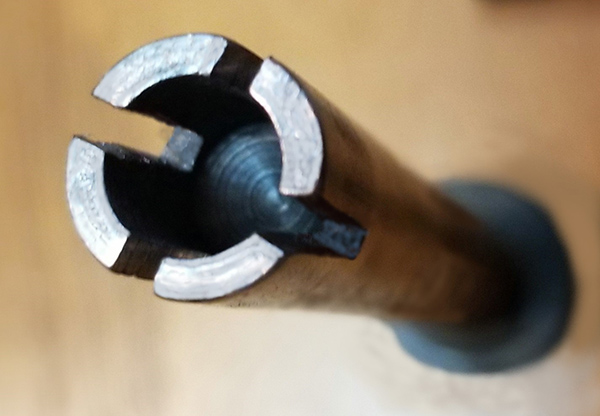
Tom Nichols, Automotive Machine & Supply, Joshua, TX
OTTER USE THIS SEAL
If you are rebuilding Ford V8 marine engines from the ‘80s and ‘90s, the marine reverse rotation 1-piece rear main seals can be expensive and almost impossible to find. The late model PTFE rear seals are non-directional and make a great seal to use in these applications. The PTFE option will work great on your late model GM marine engines as well. Always follow the manufacturer’s installation instructions.
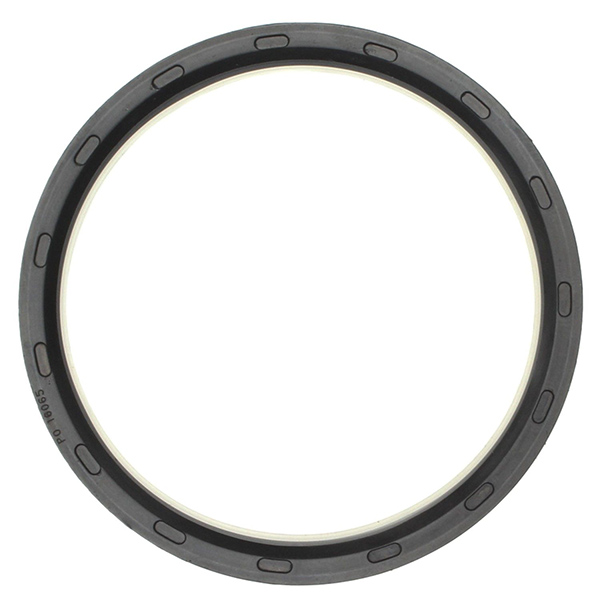
Dave Sutton, Sterling Engine Parts, Minneapolis, MN
RUST PITS
When rebuilding vintage engines, a person must deal with rusty components. When I have rust pits in the cylinders that do not require sleeving, I treat them with rust dissolver jelly right before honing. It may take a few times to get it and a small stainless brush helps. I believe it stops the rust and oil spots right after final washing. I’ve had engines on the stand for many days and even weeks without the pits growing or showing rust – in my experience anyway.
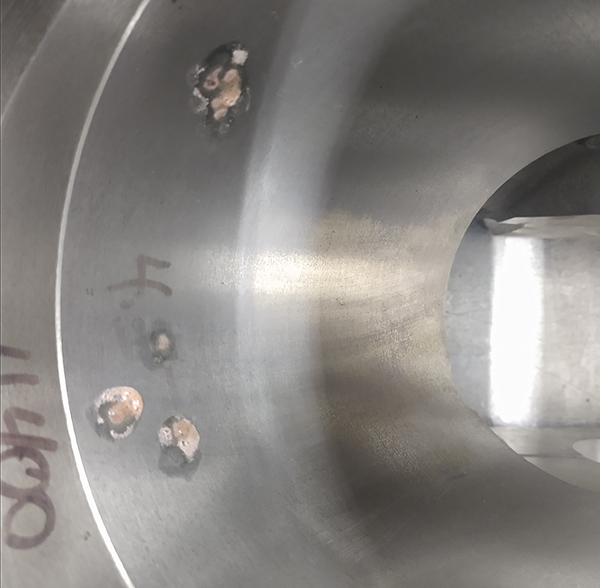
Randy Torvinen, Torvinen’s Machine, Menahga, MN
REVERSE SCRIBE TOOL
When port matching intake manifolds, I make some different shaped “Reverse Scribes” to get in and scribe mark the dye on the intake manifold flange side. It works great, is often easier than marking and transferring an intake gasket pattern, as this gives you a real time indication of where to port to. Sometimes transferring a gasket can allow for some misalignment if you’re not 100% right on.
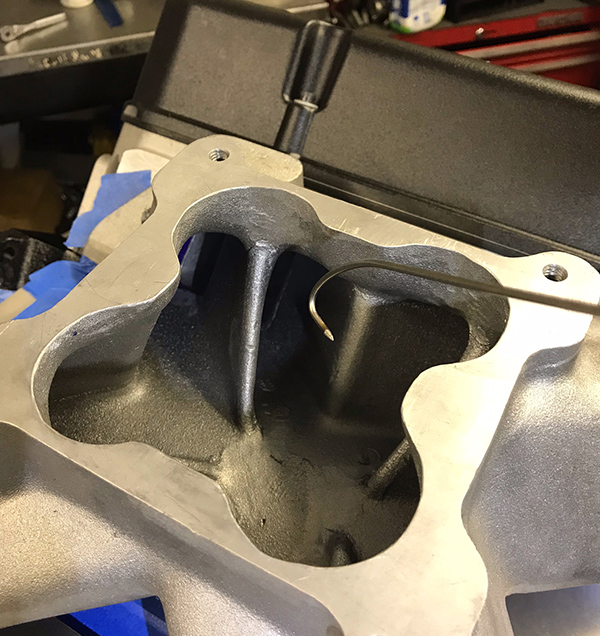
Ron Flood, Cedar machine, North Branch, MN

